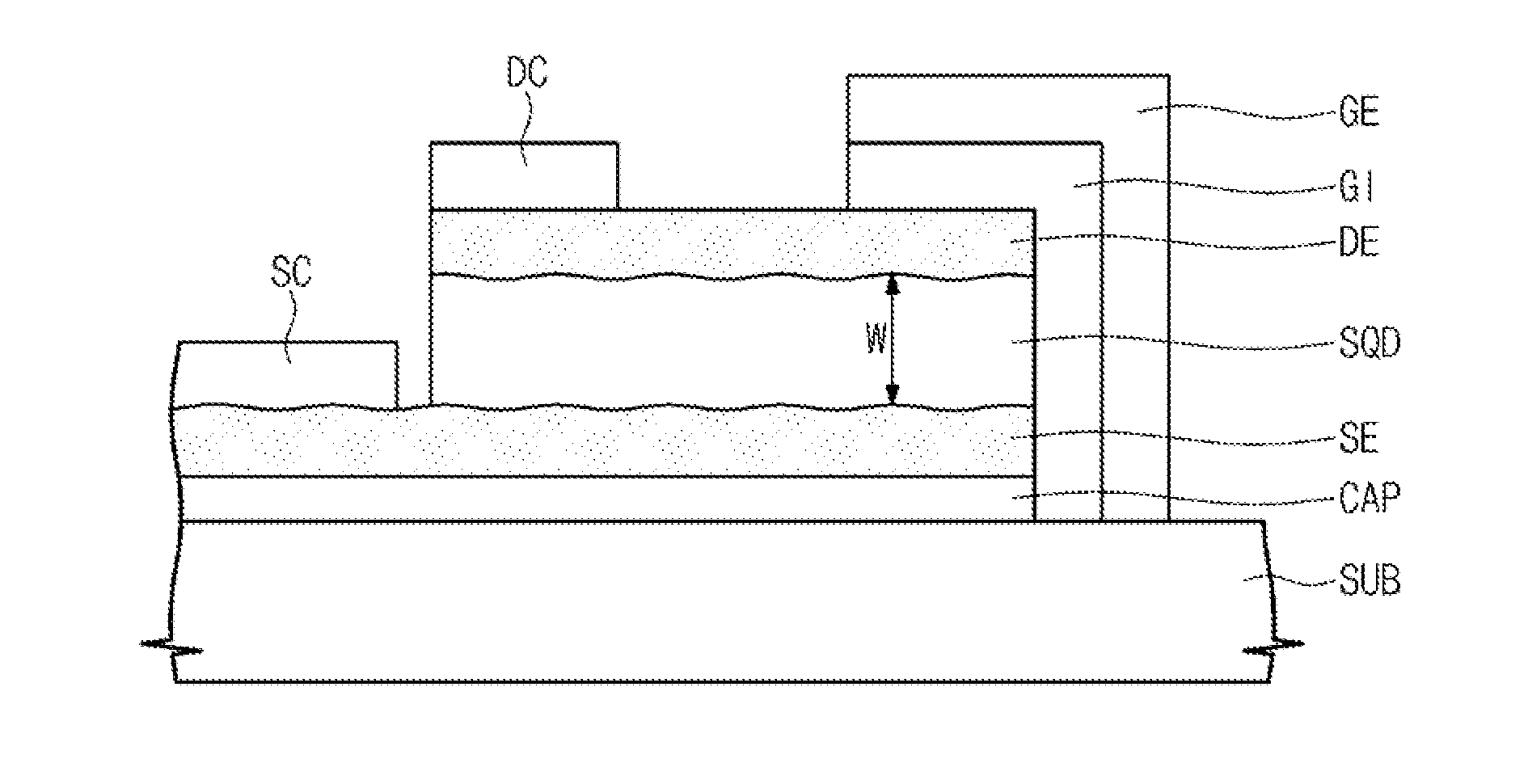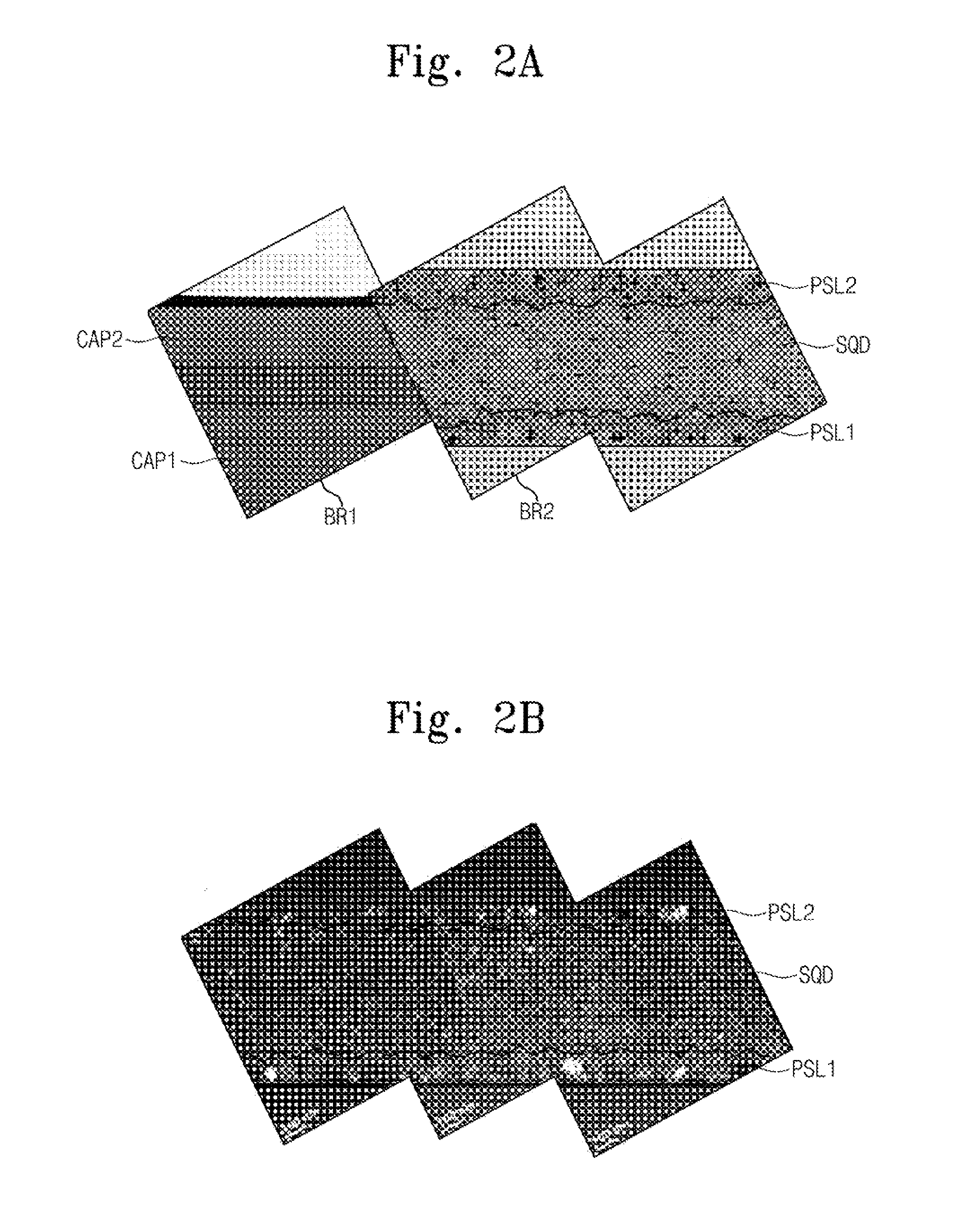Method of Fabricating Silicon Quantum Dot Layer and Device Manufactured Using the Same
a technology of quantum dots and silicon, which is applied in the manufacture of final products, coatings, basic electric elements, etc., can solve the problems of reducing efficiency and prone to photo-degradation of photovoltaic conversion devices including amorphous silicon
- Summary
- Abstract
- Description
- Claims
- Application Information
AI Technical Summary
Problems solved by technology
Method used
Image
Examples
first embodiment
[0040]FIG. 4 is an XRD (X-ray diffraction) graph of the silicon quantum dot layer SQD formed according to the present disclosure. Referring to FIG. 4, grains of silicon quantum dots are randomly grown as 111>, 220>, and 311>.
[0041]The silicon quantum dot layer SQD fabricated through the exemplary method shown in FIGS. 2A, 2B, and 3 is applicable to various devices by using the physical characteristics of the silicon quantum dots. Each silicon quantum dot has a quantum confinement effect. The quantum confinement effect refers to a phenomenon in which the energy band gap of a material is increased if the size of a material is reduced to a Bohr exciton radius or less. Accordingly, energy corresponding to the band gap may be discharged or absorbed according to the types of quantum dots. Therefore, the silicon quantum dots are applicable to, for example, a photovoltaic conversion device, a display device, or the semiconductor layer of a thin film transistor.
[0042]FIG. 5 is a sectional vi...
sixth embodiment
[0075]FIG. 9 is a sectional view showing a display device including the silicon quantum dot layer SQD according to a sixth exemplary embodiment of the present disclosure. The display device according to the sixth exemplary embodiment has the structure similar to that of the photovoltaic conversion device according to the second exemplary embodiment. The sixth embodiment will be described in the context of the second exemplary embodiment. Structures and components of the sixth exemplary embodiment found in of the second exemplary embodiment will not be further described. In addition, for the purpose of explanation, the same reference numbers are used in connection with the same components of the second exemplary embodiment.
[0076]The display device includes the substrate SUB having a plurality of pixel regions. The substrate SUB is provided on a plurality of light emitting devices corresponding to the pixel regions. Since the light emitting devices have the same structure, FIG. 9 show...
PUM
| Property | Measurement | Unit |
|---|---|---|
| thickness | aaaaa | aaaaa |
| width | aaaaa | aaaaa |
| conductive | aaaaa | aaaaa |
Abstract
Description
Claims
Application Information
 Login to View More
Login to View More - R&D
- Intellectual Property
- Life Sciences
- Materials
- Tech Scout
- Unparalleled Data Quality
- Higher Quality Content
- 60% Fewer Hallucinations
Browse by: Latest US Patents, China's latest patents, Technical Efficacy Thesaurus, Application Domain, Technology Topic, Popular Technical Reports.
© 2025 PatSnap. All rights reserved.Legal|Privacy policy|Modern Slavery Act Transparency Statement|Sitemap|About US| Contact US: help@patsnap.com



